3 Ways the National Business Aviation Association’s 2024 Convention & Expo Reached New Heights
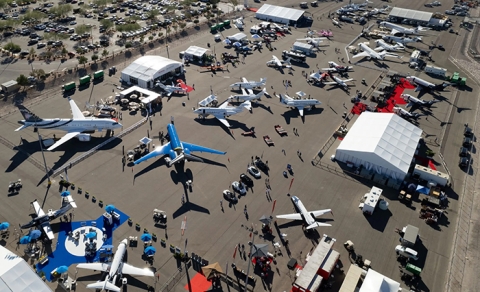
The National Business Aviation Association’s Business Aviation Convention & Exhibition (NBAA-BACE), took flight Oct. 22-24 at the Las Vegas Convention Center (LVCC) with expanded career-advancement opportunities, programming designed just for next-gen aviation professionals, and safety sessions that cemented NBAA’s position as an industry leader.
Laurie Lutz, NBAA senior vice president of events, said that returning to Sin City for the second year was a no-brainer given the convention’s enormous footprint. For reference, it requires more than 1 million square feet of exhibition space as well as a nearby airport for exhibitors to be able to showcase the latest and greatest aircraft, she said.
With that, the 2024 iteration of the event occupied the LVCC’s West Hall—marking the first year that NBAA-BACE took up just one expo hall due to construction at venue (one of the greatest planning challenges, according to Lutz)––as well as a runway at Henderson Executive Airport (HND) roughly 14 miles away.
At the airport, The Pink Jet, an L-39 Albatros military trainer jet that serves as a powerful symbol of strength, hope, and resilience for breast cancer survivors and those affected by the disease, parked an actual pink jet in the center of the runway to raise awareness, support survivors, and raise funds for a cure through aviation.
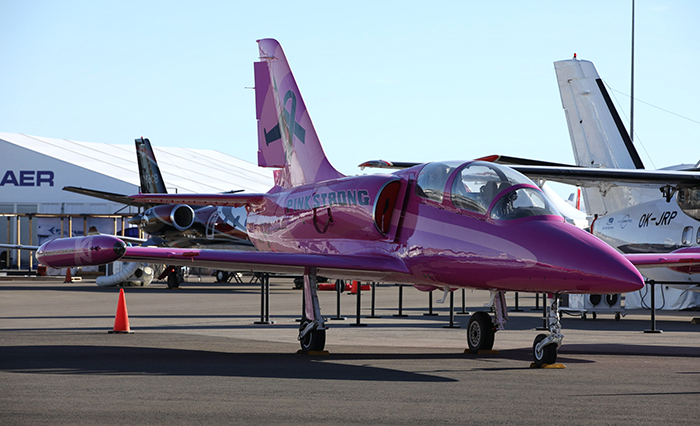
“It got a lot of great attention for a really great cause,” Lutz said of the aircraft, which shared the venue with a brand-new lineup of McLaren supercars and helicopters from urban airliner BLADE.
Back on the show floor, more than 800 leading companies in the business aviation space exhibited, generating so much buzz that NBAA already has its exhibitor applications open for its 2025 BACE event, which is set to return to Vegas Oct. 14-16 next year. The application typically opens roughly six months out from the event, so having a reason to offer it now is a form of immediate feedback to the highest degree, said Dan Hubbard, NBAA senior vice president of communications.
Lutz and Hubbard dished out more about what the event’s buzz was likely all about. Here are the top three things that caught TSNN’s eye:
-
Expanded career-advancement opportunities
Career-advancement opportunities came in many forms at BACE: NBAA’s Young Professionals program celebrated its 10th anniversary at the expo, there was a career fair, and a slew of professional development programming saw attendees who are already established in their career discovering new ways for their “career to reach its full potential,” Hubbard explained.
NBAA’s Young Professionals (YoPro) Council celebrated its milestone anniversary by giving out its inaugural Young Professionals in Business Aviation Scholarship, and on the trade show floor, the council conducted educational sessions on topics such as establishing work-life balance.
When the expo floor shut down for the day, YoPro hosted after-hours events, including a networking reception and “Helpy Hour” on the first night of BACE. And in the spirit of lifting future generations, Helpy Hour partnered with local nonprofit Project 150 to assist in providing free clothes, food, hygiene products, and school supplies to homeless teens.
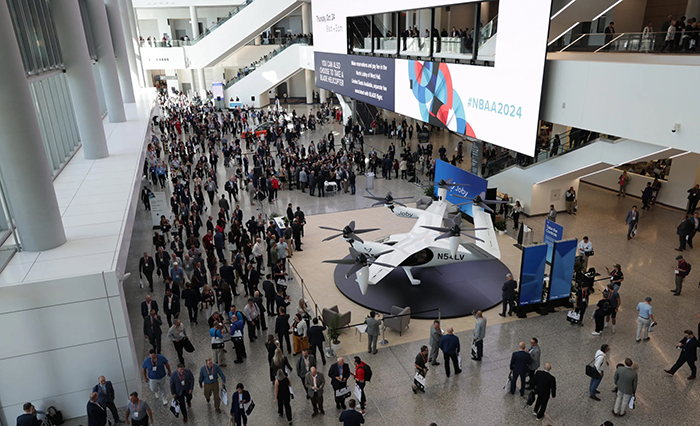
Meanwhile, Canadian aircraft manufacturer Bombardier hosted training courses at Henderson Executive Airport for 80 students. The event was planned by Guinness World Record-breaking pilot and educator Barrington Irving (who was the first black person to circumnavigate the globe in 2007 and was the youngest person to do so at the time, at age 23), and included networking breaks for students to meet with prospective employers.
NBAA’s Career Fair took place Oct. 23-24 in tandem with Collegiate Connect, a one-day program (on Oct. 24) specifically designed for students currently enrolled in university. Jo Damato, the senior vice president of education, training, and workforce development at NBAA described Collegiate Connect as, “like business aviation LinkedIn, come to life.”
There was also programming “for people who are no longer students, [and] are already professionals in the industry,” Hubbard said, noting NBAA’s sessions geared towards professional development included courses on leadership, awareness training, communication, and more.
-
The Flight Deck
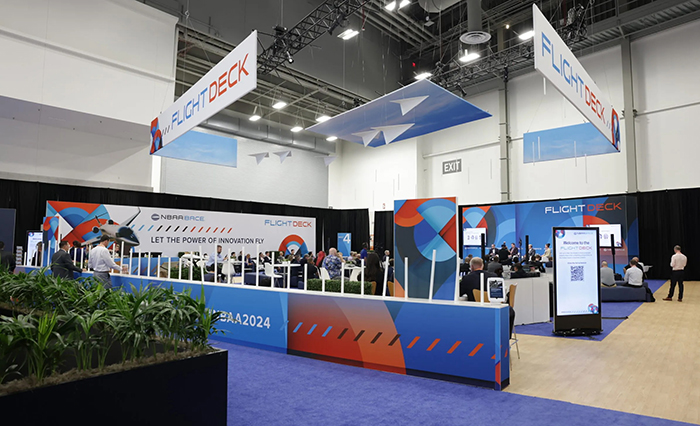
The NBAA introduced the Flight Deck to the expo floor this year. “The idea behind the Flight Deck is that there is so much dynamism and innovation in the industry that we wanted to create an interactive space where we could bring together the big thinkers—the top leaders—across some of the major trends that are shaping the industry, and allow for interactive discussion about some of those trends,” Hubbard explained.
Programming at the Flight Deck included a series of panel discussions featuring the likes of Dallas Jet International president and CEO Brad Harris, FAA Air Traffic Organization COO Tim Arel, and TSA’s deputy executive assistant administrator, Chad Gorman, just to name a few. Timely industry trends they spoke about spanned artificial intelligence, management fundamentals, and what brokers have been paying attention to.
“We had standing room only. It was packed, and that was a really incredible way to kick off the Flight Deck,” Lutz said of the hub.
-
An increased focus on safety—with top experts to drive important messages home
Safety piloted the lion’s share of BACE's main-stage programming—the result of feedback from past attendees on what’s top of mind in the industry right now, according to Hubbard. As a result, safety sessions “looked at safety in three different ways [because] the business aviation community is very diverse,” Hubbard said, which means BACE’s attendees are, too.
“You’ve got somebody who may just fly himself in a little single engine piston aircraft. And you’ve got whole flight teams of 40-50 people who manage an aircraft,” Hubbard added, noting that the variety of programming related to safety was derived from a need to appeal to both demographics. (He also noted that badge scanning as attendees entered the programming area was vital in collecting this data.)
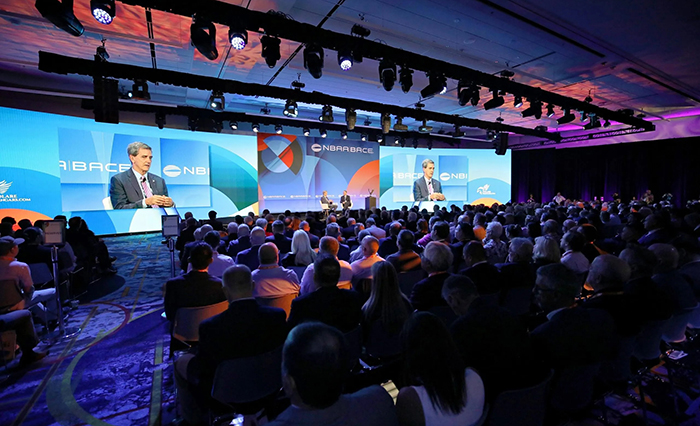
So, aside from safety tips for those who work with commercial airlines, plus cabin crews and management teams, there was also a Single-Pilot Safety Standdown event designed specifically for single-pilot operations, plus a Small Operator Symposium for small flight departments.
It was especially important to BACE organizers to also have education surrounding federal rules and regulations that keep the industry running. For example, the FAA implemented a "new federal mandate on what’s called a safety management system,” Hubbard said, and the IRS also announced a “whole series of audits on businesses that use an airplane.”
The caliber of speakers covering these topics at BACE showed just how much NBAA has its finger on the pulse of what’s top of mind for its attendees. For example, safety sessions were led by the likes of Dr. Susan Northrup, a U.S. federal air surgeon at the FAA, as well as congressional leaders like Sam Graves (R-6-MO) and Rick Larsen (D-2-WA), who spearheaded this year’s FAA reauthorization.
Don’t miss any event-related news: Sign up for our weekly e-newsletter HERE, listen to our latest podcast HERE and engage with us on LinkedIn!


Add new comment